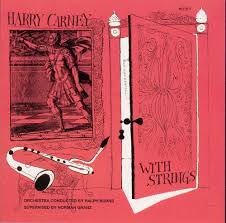
Daily Dose Of Jazz
Harry Howell Carney was born on April 1, 1910 in Boston, Massachusetts and grew up close to future bandmate Johnny Hodges. He began playing the piano at age seven, moved to the clarinet at 14, and added the alto saxophone a year later. His first professional gig was in Boston clubs.
Early influences on Carney’s playing included Buster Bailey, Sidney Bechet, and Don Murray. He also reported that, for his baritone saxophone playing, he “tried to make the upper register sound like Coleman Hawkins and the lower register like Adrian Rollini”
After moving to New York City he played a variety of gigs at the age of 17, and soon Carney was invited to join the Duke Ellington band for its performances in Boston in 1927. In October the same year, he recorded his first session with the band and having established himself, stayed with it for the rest of his life.
The band began a residency at the Cotton Club in New York at the end of the year, and Ellington added more personnel in 1928. Carney’s main instrument became the baritone saxophone and he became a dominant figure on the baritone in jazz, with no serious rivals on the instrument until the advent of bebop in the mid-1940s. Within the overall sound of the Ellington band, Carney’s baritone was often employed to play parts of harmonies that were above the obvious low pitching of the instrument; this altered the textures of the band’s sound.
In 1938, Carney was invited to play with Benny Goodman’s band at Carnegie Hall and the recordings were released as The Famous 1938 Carnegie Hall Jazz Concert. By 1944 he added the bass clarinet, co-composed Rockin’ in Rhythm and was usually responsible for executing the bubbling clarinet solo on this tune. In 1957, he was part of a band led by pianist Billy Taylor that recorded the album Taylor Made Jazz.
For over four decades Harry became the longest-serving player in Ellington’s orchestra. On occasions, he would serve as the band’s conductor, recorded one album as a leader and had many showpiece features written for him by the bandleader including his 1973 Third Sacred Concert built around his baritone saxophone.
Over the course of his career, he recorded with Rosemary Clooney, Ella Fitzgerald, Johnny Hodges, Jazz at the Philharmonic, and Billy Taylor. After Ellington’s death on May 24, 1974, some four months later baritone saxophonist and bass clarinetist Harry Carney, who was an early jazz proponent of circular breathing, passed away on October 8, 1974, in New York City.
More Posts: bandleader,history,instrumental,jazz,music,saxophone


